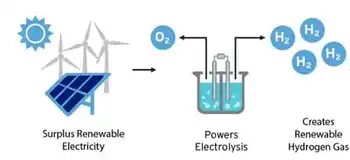Canadian Emissions Target Falls Short
By Globe and Mail
High Voltage Maintenance Training Online
Our customized live online or in‑person group training can be delivered to your staff at your location.

- Live Online
- 12 hours Instructor-led
- Group Training Available
In a recent report, the Washington-based Pew Center on Global Climate Change tallied up commitments that developed countries have announced ahead of the Copenhagen climate summit.
In total, industrialized countries plan to reduce emissions between 13 per cent and 19 per cent below 1990 levels by 2020. The United Nations' Intergovernmental Panel on Climate Change urged emission reductions of between 25 per cent and 40 per cent by 2020, and 80 per cent by 2050, to prevent the most severe disruptions in climate, including floods and droughts.
The Harper government's target is a 20-per-cent reduction from 2006 levels by 2020.
Pew Center analysts warned against inflated expectations for the Copenhagen meeting, saying countries are far apart on most major issues and are unlikely to reach a binding agreement until the end of 2010.
“I'm disturbed about the numbers not being good enough,” Eileen Claussen, president of the Pew Center, said of targeted emission cuts.
“It's unfortunate.… But once we get started, I think we can catch up. Once we turn the ship around and start heading into a low-carbon economy, it [will be] something that is really beneficial for us to do.”
Canada is among the least ambitious of developed countries to announce 2020 emission targets, especially given the fact that Ottawa, under the previous Liberal government, agreed in the Kyoto Protocol to reduce its emissions by 6 per cent below 1990 levels by 2012.
The Harper government calls that target unrealistic. Its goal of a 20-per-cent reduction from 2006 levels by 2020 is equivalent to 3 per cent below 1990 levels, to be achieved eight years after Canada was due to meet its Kyoto commitment.
Most provinces have adopted their own targets – ranging from Quebec's goal of a 20 per cent reduction from 1990 levels by 2020 to Alberta's plan to stabilize emissions by 2020 at an estimated 58 per cent higher than 1990 levels. Alberta's emissions are rising dramatically as a result of economic and population growth, reliance on coal-fired power and the expansion of the oil sands.
Prime Minister Stephen Harper says Canada's target is in line with that of the United States, where President Barack Obama vows to adopt policies that will cut emissions by roughly 17 per cent from 2005 levels by 2020.
And Ottawa contends that Canada's effort is comparable to that of European and developed Asian countries because the costs of cutting emissions are higher here.
However, environmentalists call Canada a laggard because it neglects to account for its Kyoto commitments – and could face a 30-per-cent penalty if it is not in compliance by 2014 – and because the United States has pending legislation that spells out how it will achieve its targets, while Ottawa says only that it will harmonize with U.S. policies.
Dale Marshall, climate-change analyst with the David Suzuki Foundation, said Canada's lack of ambition stems from the government's western political base and the prospect of sharply higher emissions from expansion of the oil sands.
“The tar sands stand in the way in terms of Canada taking a real, ambitious stand on climate change,” Mr. Marshall said.
Canadian environmentalists have criticized the Harper government for playing down expectations for the Copenhagen talks, but the Pew Center's Ms. Claussen said there is little chance that countries will reach even broad political agreement, let alone the kind of binding commitments Danish Prime Minister Lars Rasmussen wants.
She said countries' positions on various issues have changed little over the past two years.
“We're not going to come out with legally binding commitments for anybody,” Ms. Claussen said. Rather, she is looking for momentum that would encourage the U.S. Congress to pass climate-change legislation now in the Senate, and set the stage for the conclusion of a binding agreement at the end of 2010.
There is also hope that developed countries will agree to finance a $10-billion (US) per year “prompt start” fund to assist developing nations between 2010 and 2012 to reduce emissions and prepare to adapt to climate change.
Countries must negotiate not only levels of emission reductions, but whether developing countries will be bound by the treaty, either in the targets they have announced, or in the actions they plan to pursue.
They must also decide whether the Kyoto Protocol will be extended, with a side agreement for countries like the United States and China that were not signatories, or whether it will be merged into one agreement as Canada and most developed countries prefer.
And they need to reach a consensus on how the international community will verify compliance and what – if any – sanctions will apply to those that fail to meet their commitments.











